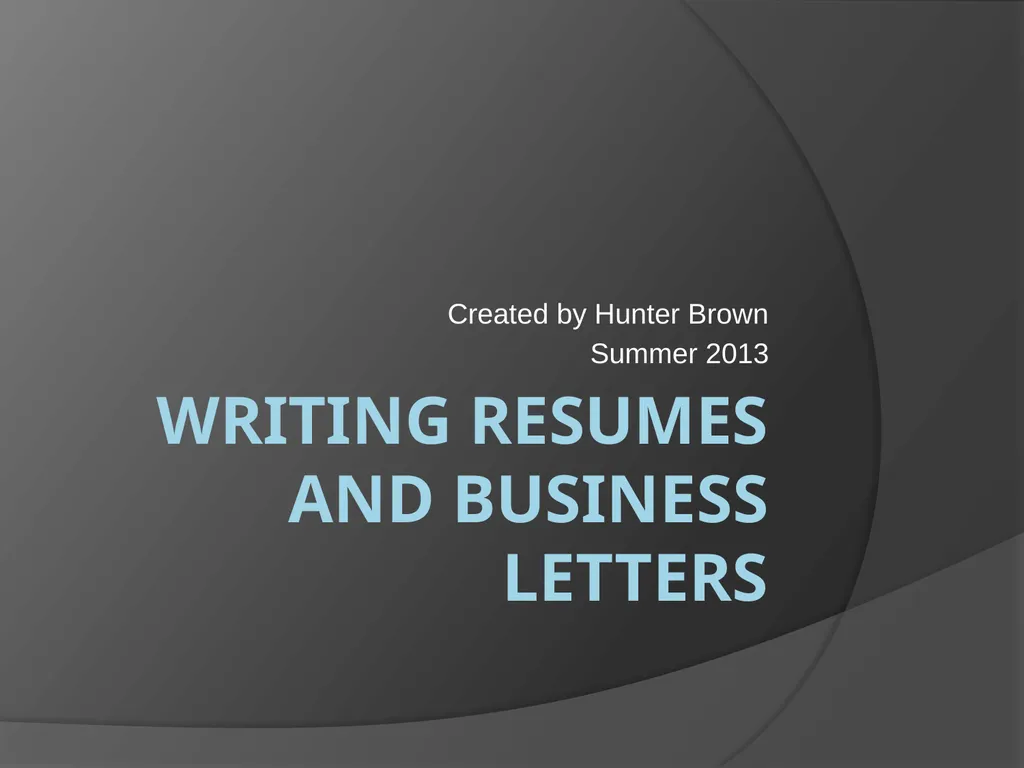
Author : marina-yarberry | Published Date : 2025-05-09
Description: Writing Resumes and Business Letters Created by Hunter Brown Summer 2013 Resumes A resume is a structured summary of a persons education, employment background, and job qualifications. Before you begin writing a resume, make sure youDownload Presentation The PPT/PDF document "" is the property of its rightful owner. Permission is granted to download and print the materials on this website for personal, non-commercial use only, and to display it on your personal computer provided you do not modify the materials and that you retain all copyright notices contained in the materials. By downloading content from our website, you accept the terms of this agreement.
Here is the link to download the presentation.
"Writing Resumes and Business Letters Created by"The content belongs to its owner. You may download and print it for personal use, without modification, and keep all copyright notices. By downloading, you agree to these terms.












![[DOWNLOAD] - Wow! Resumes for Administrative Careers: How to Put Together A Winni...](https://thumbs.docslides.com/901911/download-wow-resumes-for-administrative-careers-how-to-put-together-a-winning-resume.jpg)
![[EBOOK] - Gallery of Best Resumes: A Collection of Quality Resumes by Professiona...](https://thumbs.docslides.com/903026/ebook-gallery-of-best-resumes-a-collection-of-quality-resumes-by-professional-resume-writers.jpg)